Search Result
Results for "
tricyclic antidepressant
" in MedChemExpress (MCE) Product Catalog:
16
Isotope-Labeled Compounds
| Cat. No. |
Product Name |
Target |
Research Areas |
Chemical Structure |
-
- HY-142122
-
-

-
- HY-B1417
-
|
Desmethylamitriptyline hydrochloride; Desitriptilina hydrochloride
|
Autophagy
Drug Metabolite
Apoptosis
|
Neurological Disease
Cancer
|
|
Nortriptyline (Desmethylamitriptyline) hydrochloride, the main active metabolite of Amitriptyline, is a tricyclic antidepressant. Nortriptyline hydrochloride is a potent autophagy inhibitor and has anticancer effects .
|
-

-
- HY-118620
-
|
Desmethylamitriptyline; Desitriptilina
|
Autophagy
Drug Metabolite
Apoptosis
|
Neurological Disease
Cancer
|
|
Nortriptyline (Desmethylamitriptyline), the main active metabolite of Amitriptyline, is a tricyclic antidepressant. Nortriptyline is a potent autophagy inhibitor and has anticancer effects .
N
|
-

-
- HY-12388A
-
|
Desmethylclomipramine hydrochloride
|
Drug Metabolite
|
Neurological Disease
|
|
N-Desmethyl Clomipramine hydrochloride (Desmethylclomipramine hydrochloride) is a primary plasma N-desmethyl metabolite of Clomipramine. Clomipramine is a tricyclic antidepressant .
|
-
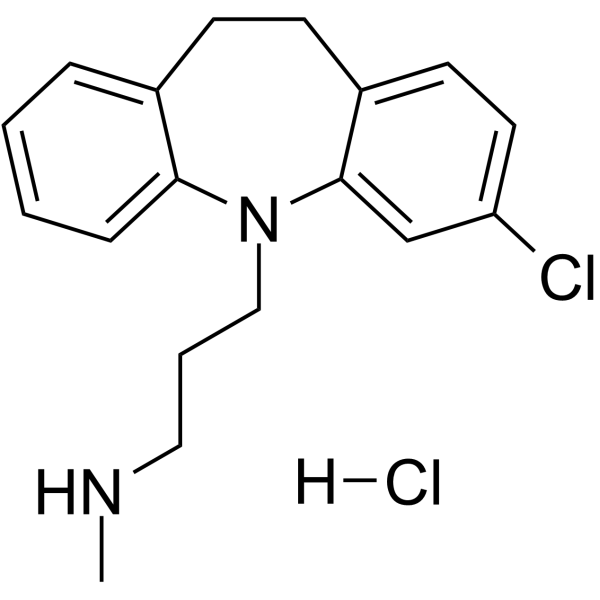
-
- HY-100046
-
|
Desmethyldoxepin hydrochloride
|
Drug Metabolite
|
Neurological Disease
|
|
Nordoxepin hydrochloride is the major metabolite of Doxepin. Doxepin is a tricyclic antidepressant that is widely prescribed for the research of mild depression .
|
-
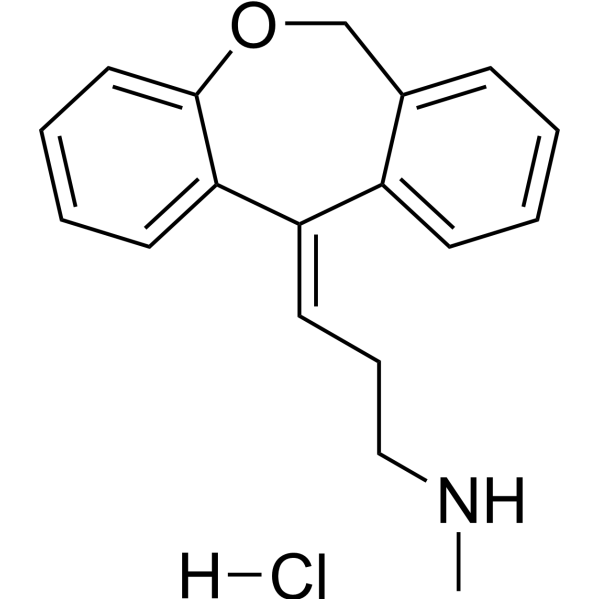
-
- HY-121778
-
|
Melitracene; N 7001; Trausabun
|
Others
|
Neurological Disease
|
|
Melitracen (Melitracene) is an orally active tricyclic antidepressant and it is also a bipolar thymoleptic with activating properties. Melitracen inhibits 3H-5-HT and 14H-5-HT with IC50s of 670 nM and 5500 nM, respectively. Melitracen can be used for the research of depression and anxiety .
|
-
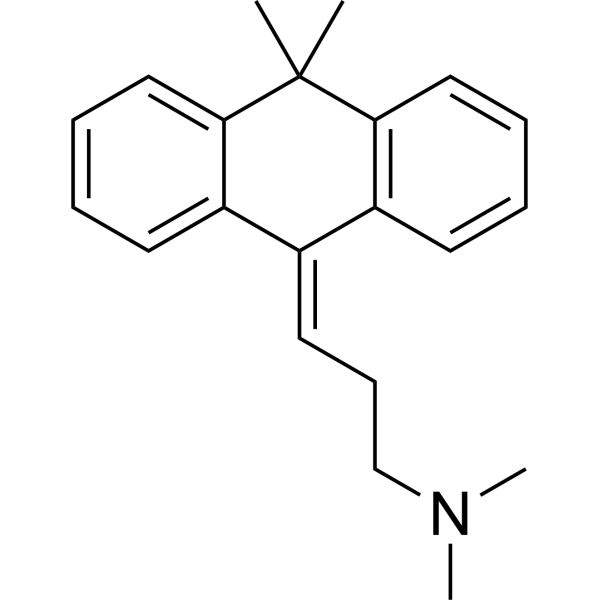
-
- HY-B0725S
-
|
|
Histamine Receptor
Cytochrome P450
|
Neurological Disease
|
|
Doxepin-d3 (hydrochloride) is a deuterium labeled Doxepin Hydrochloride. Doxepin hydrochloride is an orally active tricyclic antidepressant. Doxepin hydrochloride is a potent and selective histamine receptor H1 antagonist. Doxepin hydrochloride is also a potent CYP450 inhibitor and significantly inhibits CYP450 2C19 and 1A2[1][2].
|
-
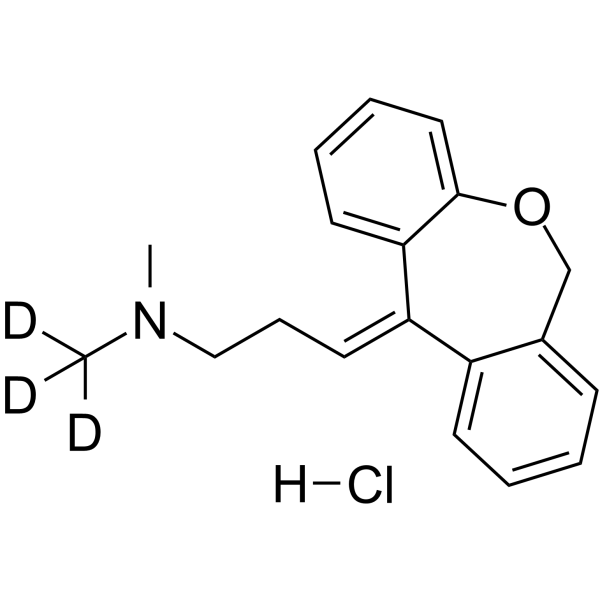
-
- HY-B0991
-
|
CL-67772
|
Others
|
Neurological Disease
|
|
Amoxapine is a tetracyclic antidepressant of the dibenzoxazepine family, although it is generally classified as a secondary amine tricyclic antidepressant.
|
-
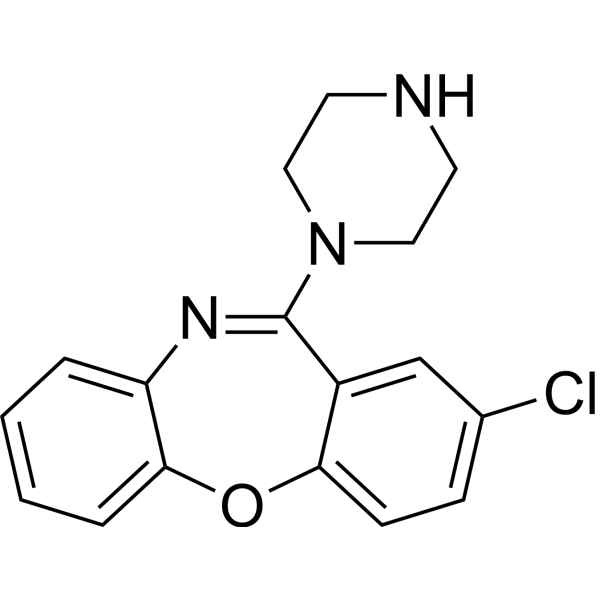
-
- HY-A0175
-
|
Butriptylene
|
|
|
|
Butriptyline (Butriptylene) is an orally active tricyclic antidepressant agent .
|
-
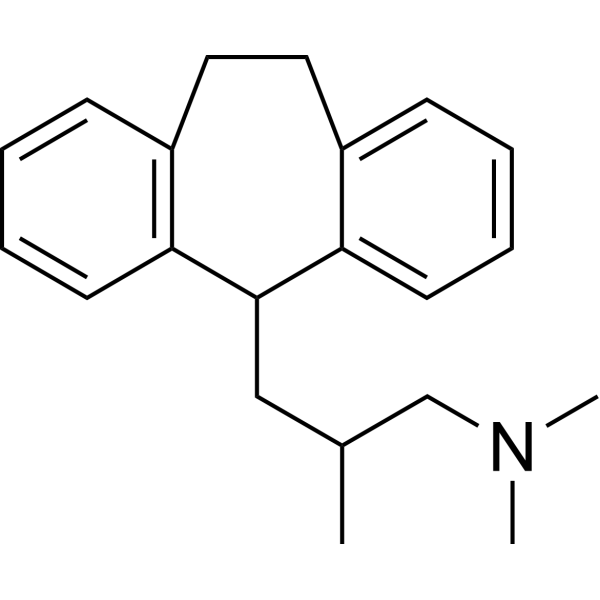
-
- HY-B0949
-
-

-
- HY-B0991S
-
|
CL-67772-d8
|
Isotope-Labeled Compounds
|
Neurological Disease
|
|
Amoxapine-d8 is the deuterium labeled Amoxapine. Amoxapine is a tetracyclic antidepressant of the dibenzoxazepine family, though it is often classified as a secondary amine tricyclic antidepressant.
|
-
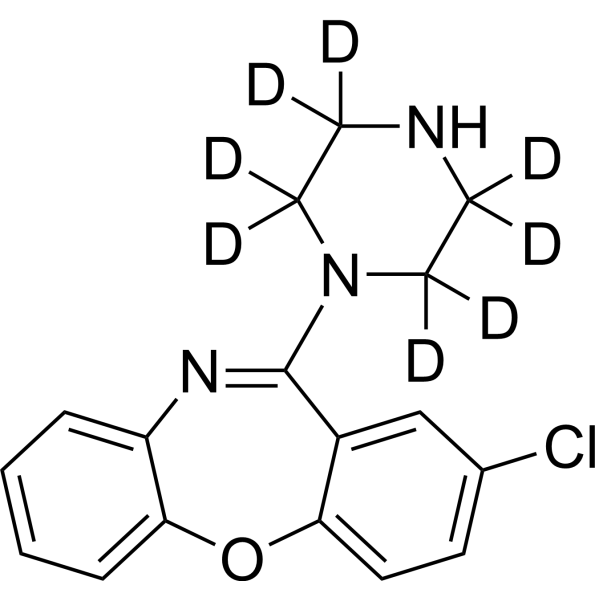
-
- HY-101684
-
|
CIBA 2330Go
|
Serotonin Transporter
|
Neurological Disease
|
|
Nitroxazepine is a tricyclic antidepressant (TCA) for the research of depression. Nitroxazepine acts as a serotonin-norepinephrine reuptake inhibitor.
|
-

-
- HY-12392
-
-

-
- HY-133771AS
-
|
Desmethyldoxepin-d3 (hydrochloride)
|
Drug Metabolite
|
Neurological Disease
|
|
Nordoxepin-d3 (hydrochloride) is the deuterium labeled Nordoxepin hydrochloride. Nordoxepin hydrochloride is an active metabolite of Doxepin hydrochloride (HY-B0725), which is an orally active tricyclic antidepressant[1].
|
-

-
- HY-B0991R
-
|
CL-67772 (Standard)
|
Others
|
Neurological Disease
|
|
Amoxapine (Standard) is the analytical standard of Amoxapine. This product is intended for research and analytical applications. Amoxapine is a tetracyclic antidepressant of the dibenzoxazepine family, although it is generally classified as a secondary amine tricyclic antidepressant.
|
-
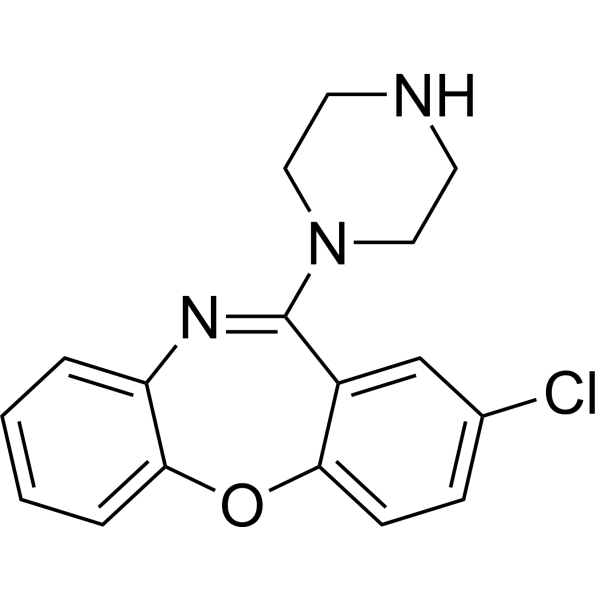
-
- HY-100651
-
|
|
|
|
|
Desmethylnortriptyline is a metabolite of Nortriptyline. Nortriptyline is a tricyclic antidepressant and the main active metabolite of Amitriptyline, and is used to relieve the symptoms of depression .
|
-
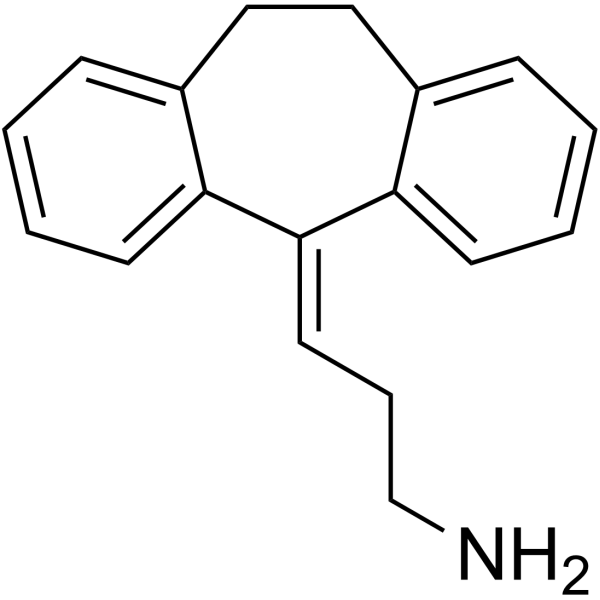
-
- HY-100646
-
|
|
|
|
|
(E)-10-Hydroxynortriptyline maleate is a metabolite of Nortriptyline. Nortriptyline is a tricyclic antidepressant and the main active metabolite of Amitriptyline, and is used to relieve the symptoms of depression .
|
-
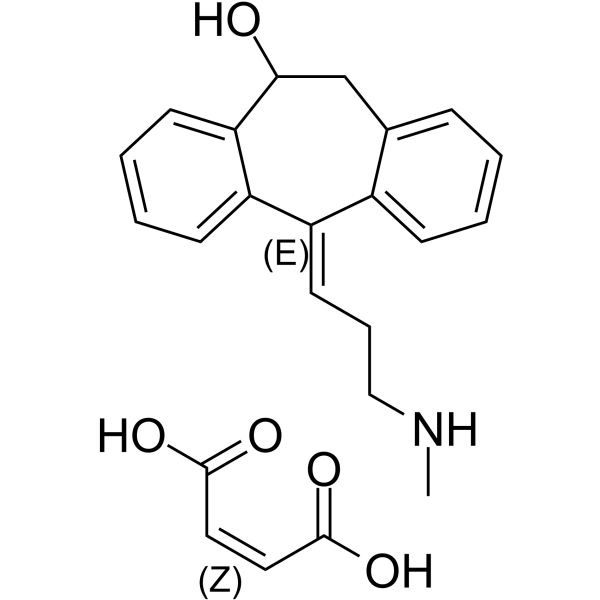
-
- HY-100646A
-
|
|
Drug Metabolite
|
Neurological Disease
|
|
(Z)-10-Hydroxynortriptyline is a metabolite of Nortriptyline. Nortriptyline is a tricyclic antidepressant and the main active metabolite of Amitriptyline, and is used to relieve the symptoms of depression .
|
-
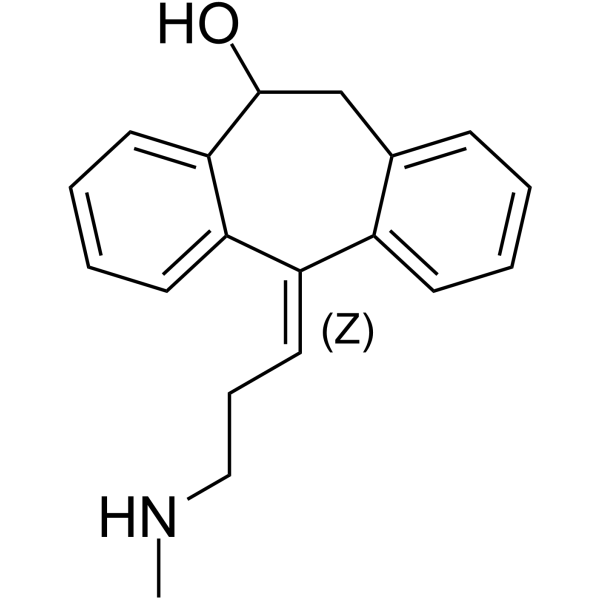
-
- HY-106456
-
|
GP 31406
|
Cholinesterase (ChE)
|
Neurological Disease
|
|
Depramine (GP 31406) is a tricyclic antidepressant with pharmacologically activity. Depramine inhibits acetylcholinesterase,Mg 2+-ATPase,and Na+/K+ ATPase activity .
|
-

-
- HY-12390
-
|
Lopramine
|
Others
|
Neurological Disease
|
|
Lofepramine (Lopramine) is a potent tricyclic antidepressant and is extensively metabolised to Desipramine. The antidepressant activity of Lofepramine stems from the facilitation of noradrenergic neurotransmission by uptake inhibition. Lofepramine may also potentiate serotoninergic neurotransmission by inhibition of the neuronal uptake of serotonin and the enzyme tryptophan pyrrolase. Lofepramine has significant anxiolytic efficacy in addition to its antidepressant properties .
|
-
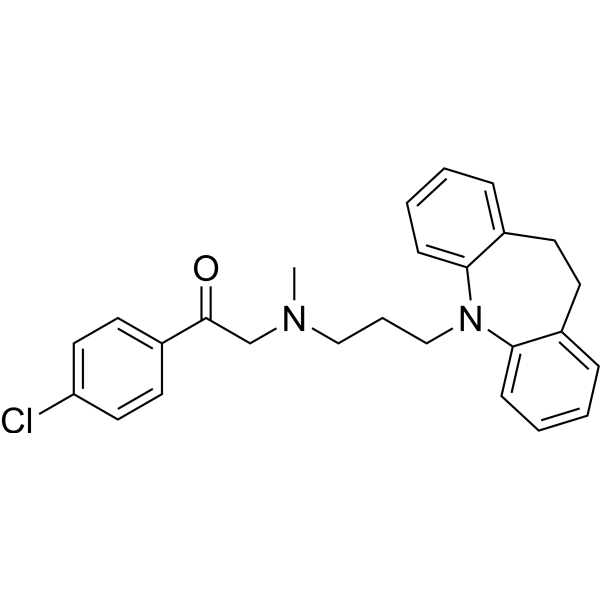
-
- HY-12390A
-
|
Lopramine hydrochloride
|
Others
|
Neurological Disease
|
|
Lofepramine (Lopramine) hydrochloride is a potent tricyclic antidepressant and is extensively metabolised to Desipramine. The antidepressant activity of Lofepramine hydrochloride stems from the facilitation of noradrenergic neurotransmission by uptake inhibition. Lofepramine hydrochloride may also potentiate serotoninergic neurotransmission by inhibition of the neuronal uptake of serotonin and the enzyme tryptophan pyrrolase. Lofepramine hydrochloride has significant anxiolytic efficacy in addition to its antidepressant properties .
|
-
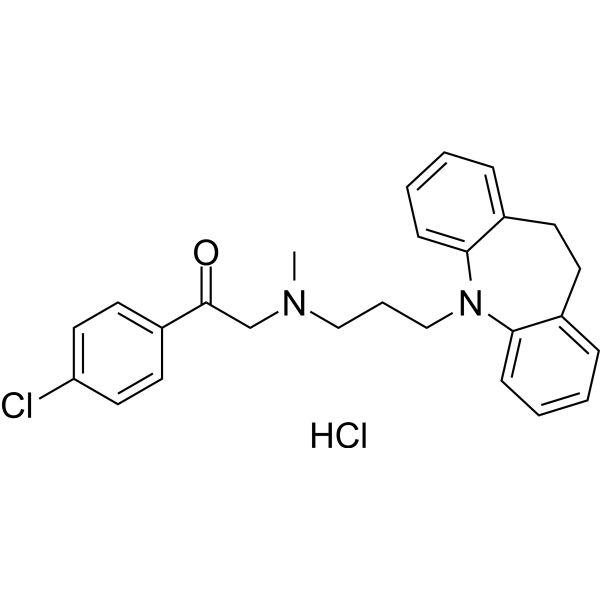
-
- HY-B1417S
-
|
Desmethylamitriptyline-d3 (hydrochloride); Desitriptilina-d3 (hydrochloride)
|
Autophagy
Apoptosis
Drug Metabolite
|
Neurological Disease
Cancer
|
|
Nortriptyline-d3 (hydrochloride) is the deuterium labeled Nortriptyline hydrochloride. Nortriptyline hydrochloride (Desmethylamitriptyline hydrochloride) is a tricyclic antidepressant and the main active metabolite of Amitriptyline, and used to relieve the symptoms of depression[1].
|
-
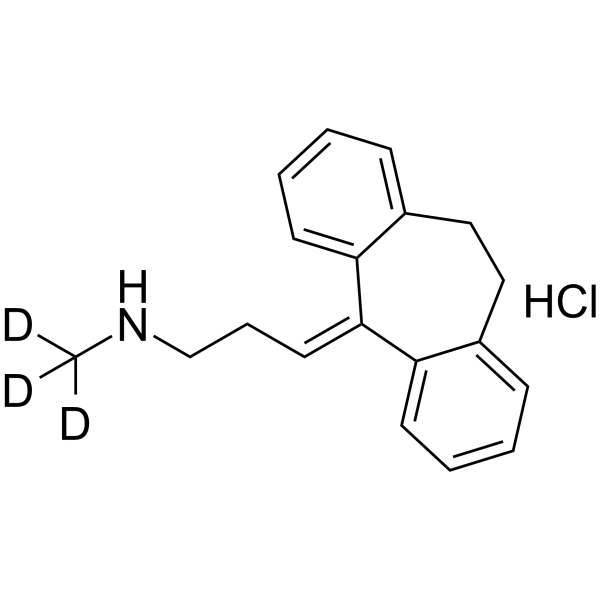
-
- HY-101753
-
|
Cyanimipramine; Ro 11-2465
|
5-HT Receptor
|
Neurological Disease
|
|
Cianopramine (Cyanimipramine) is a tricyclic antidepressant, and a potent inhibitor of neuronal serotonin (5-HT) uptake. Cianopramine blocks central and peripheral 5-HT receptors .
|
-
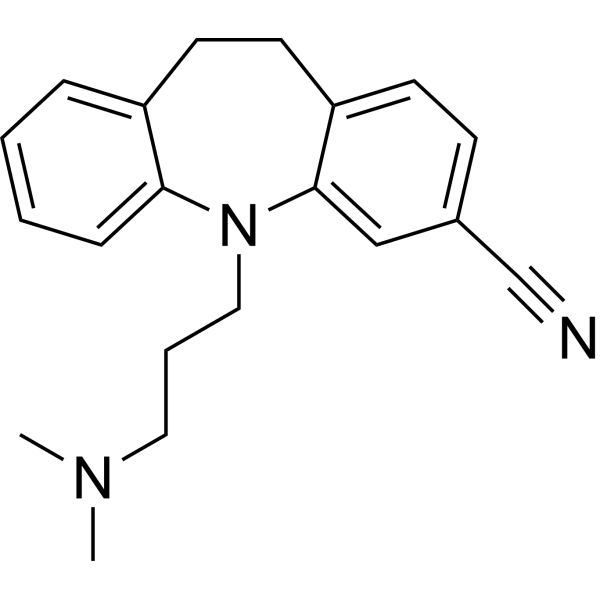
-
- HY-B0457
-
|
Chlorimipramine hydrochloride; G-34586 hydrochloride; NSC-169865 hydrochloride
|
Serotonin Transporter
|
Neurological Disease
|
|
Clomipramine (Chlorimipramine) hydrochloride is a potent 5-HT reuptake blocker with the IC50 value of 1.5 nM. Clomipramine hydrochloride is a tricyclic antidepressant that can be used for the research of depression and obsessive compulsive disorder (OCD) .
|
-
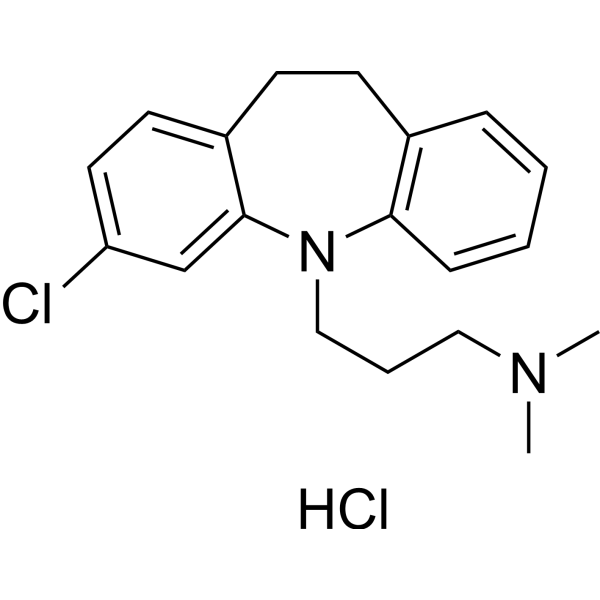
-
- HY-B0457A
-
|
Chlorimipramine; G-34586; NSC-169865
|
Serotonin Transporter
|
Neurological Disease
|
|
Clomipramine (Chlorimipramine) is a potent 5-HT reuptake blocker with the IC50 value of 1.5 nM. Clomipramine is a tricyclic antidepressant that can be used for the research of depression and obsessive compulsive disorder (OCD) .
|
-
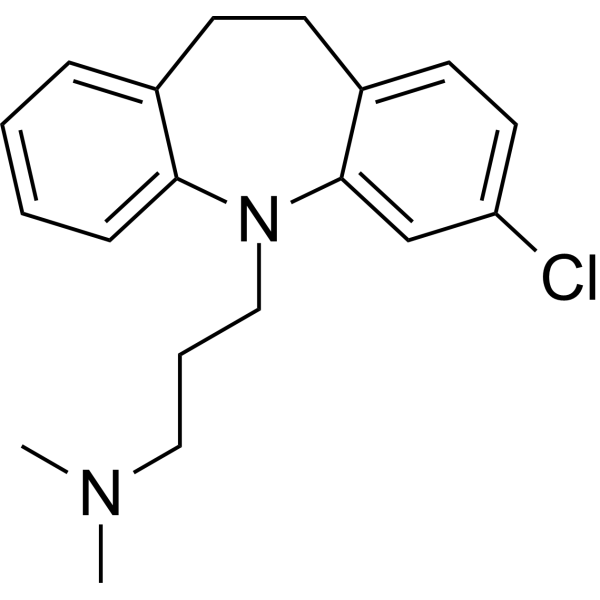
-
- HY-B0725
-
|
|
Histamine Receptor
Cytochrome P450
|
Neurological Disease
Cancer
|
|
Doxepin hydrochloride is an orally active tricyclic antidepressant agent. Doxepin hydrochloride is a potent and selective histamine receptor H1 antagonist. Doxepin hydrochloride is also a potent CYP450 inhibitor and significantly inhibits CYP450 2C19 and 1A2 . Doxepin inhibits reuptake of serotonin and norepinephrine as a tricyclic antidepressant .. Doxepin has therapeutic effects in atopic dermatitis,chronic urticarial,can improve cognitive processes, protect central nervous system .. Doxepin has also been proposed as a protective factor against oxidative stress ..
|
-
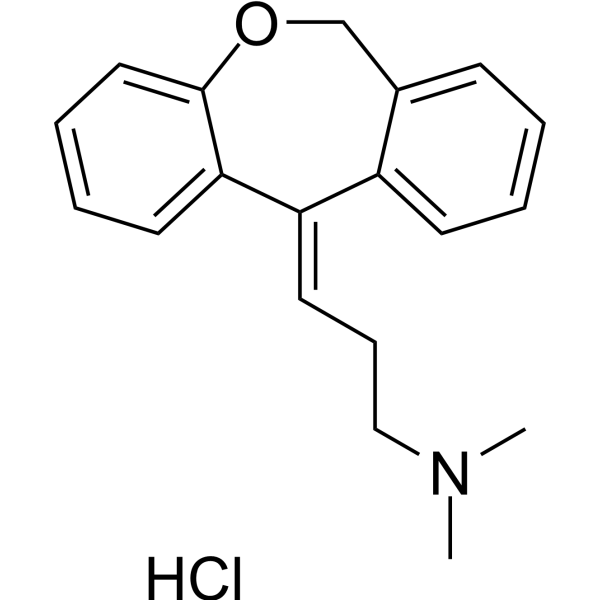
-
- HY-12390S
-
|
|
Isotope-Labeled Compounds
|
Neurological Disease
|
|
Lofepramine-d3 (Lopramine-d3) is the deuterium labeled Lofepramine. Lofepramine (Lopramine) is a potent tricyclic antidepressant and is extensively metabolised to Desipramine. The antidepressant activity of Lofepramine stems from the facilitation of noradrenergic neurotransmission by uptake inhibition. Lofepramine may also potentiate serotoninergic neurotransmission by inhibition of the neuronal uptake of serotonin and the enzyme tryptophan pyrrolase. Lofepramine has significant anxiolytic efficacy in addition to its antidepressant properties[1].
|
-
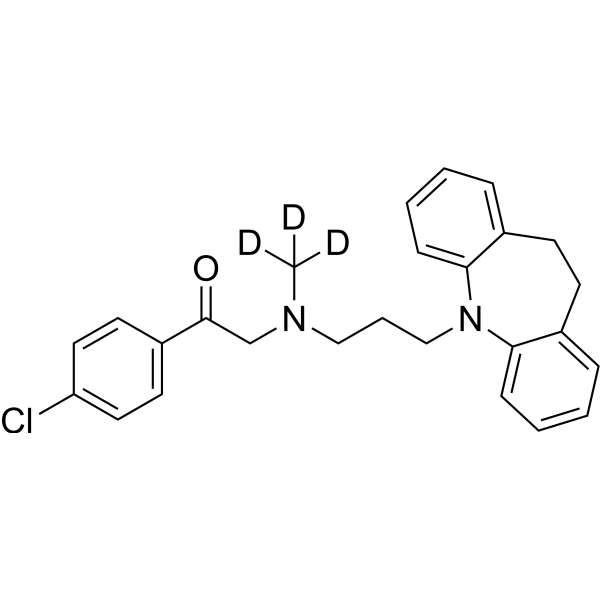
-
- HY-B1272A
-
|
|
Adrenergic Receptor
|
Neurological Disease
|
|
Desipramine is a tricyclic psychotic compound, possessing antidepressant activity. Desipramine inhibits the norepinephrine reuptake receptor in the central nervous system and reduces the sleep-related loss of genioglossus activity, can be used to research the improvement of pharyngeal collapsibility .
|
-

-
- HY-12388AR
-
|
Desmethylclomipramine hydrochloride (Standard)
|
Drug Metabolite
|
Neurological Disease
|
|
N-Desmethyl Clomipramine (hydrochloride) (Standard) is the analytical standard of N-Desmethyl Clomipramine (hydrochloride). This product is intended for research and analytical applications. N-Desmethyl Clomipramine hydrochloride (Desmethylclomipramine hydrochloride) is a primary plasma N-desmethyl metabolite of Clomipramine. Clomipramine is a tricyclic antidepressant .
|
-
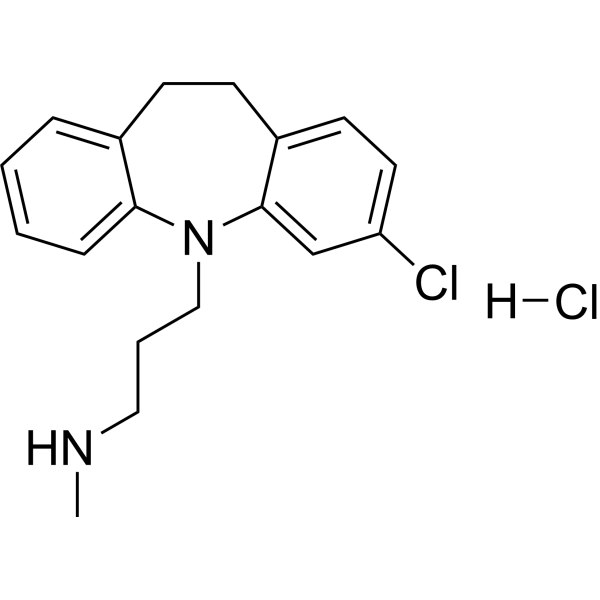
-
- HY-118901
-
|
Ensidon; G-33040
|
Sigma Receptor
|
Neurological Disease
|
|
Opipramol (Ensidon) is an atypical tricyclic antidepressant (TCA). Opipramol acts primarily as a sigma (σ) receptor agonist and can potently interact with sigma recognition sites with a Ki value of 50 nM. Opipramol can be used for the research of generalized anxiety disorder (GAD) .
|
-

-
- HY-B0725R
-
|
|
Histamine Receptor
Cytochrome P450
|
Neurological Disease
Cancer
|
|
Doxepin (Hydrochloride) (Standard) is the analytical standard of Doxepin (Hydrochloride). This product is intended for research and analytical applications. Doxepin hydrochloride is an orally active tricyclic antidepressant agent. Doxepin hydrochloride is a potent and selective histamine receptor H1 antagonist. Doxepin hydrochloride is also a potent CYP450 inhibitor and significantly inhibits CYP450 2C19 and 1A2 . Doxepin inhibits reuptake of serotonin and norepinephrine as a tricyclic antidepressant .. Doxepin has therapeutic effects in atopic dermatitis,chronic urticarial,can improve cognitive processes, protect central nervous system .. Doxepin has also been proposed as a protective factor against oxidative stress ..
|
-
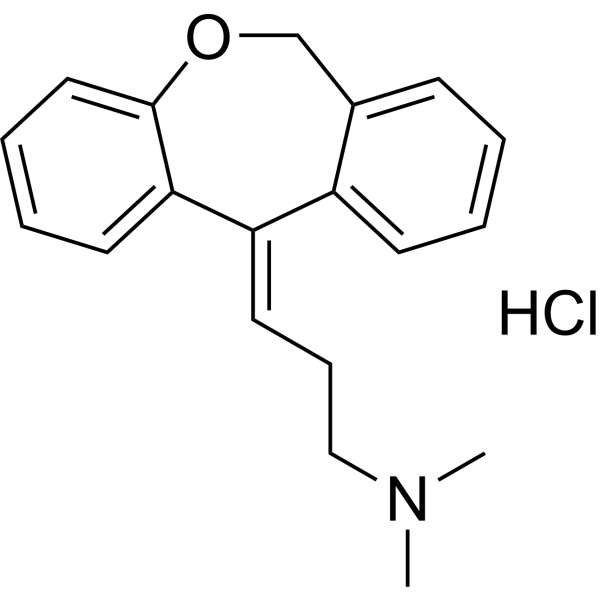
-
- HY-B0457S1
-
|
Chlorimipramine-d6 (hydrochloride); G-34586-d6 (hydrochloride); NSC-169865-d6 (hydrochloride)
|
Serotonin Transporter
|
Neurological Disease
|
|
Clomipramine-d6 (hydrochloride) is the deuterium labeled Clomipramine hydrochloride. Clomipramine (Chlorimipramine) hydrochloride is a potent 5-HT reuptake blocker with the IC50 value of 1.5 nM. Clomipramine hydrochloride is a tricyclic antidepressant that can be used for the research of depression and obsessive compulsive disorder (OCD)[1].
|
-
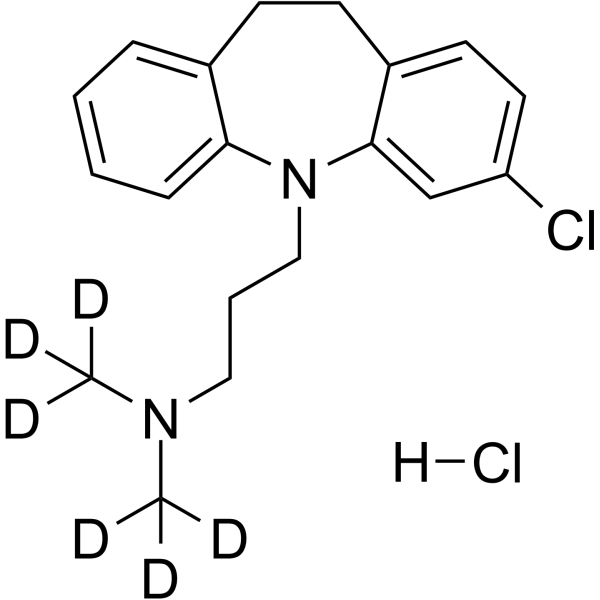
-
- HY-B0949S
-
|
|
Cholinesterase (ChE)
|
Neurological Disease
|
|
Protriptyline (N-methyl-d3) (hydrochloride) is the deuterium labeled Protriptyline hydrochloride. Protriptyline hydrochloride is a tricyclic antidepressant (TCA), specifically a secondary amine, for the treatment of depression and ADHD. Unique among the TCAs, protriptyline tends to be energizing instead of sedating, used for narcolepsy to achieve a wakefulness-promoting effect[1].
|
-

-
- HY-107031
-
|
19560 RP
|
iGluR
|
Others
|
|
Metapramine (19560 RP) is an antidepressant agent, belonging to the class of tricyclic compounds . Metapramine inhibits norepinephrine reuptake, without affecting the reuptake of serotonin or dopamine . Metapramine is a low-affinity antagonist of the N-methyl-D-aspartic acid (NMDA) receptor complex channel .
|
-
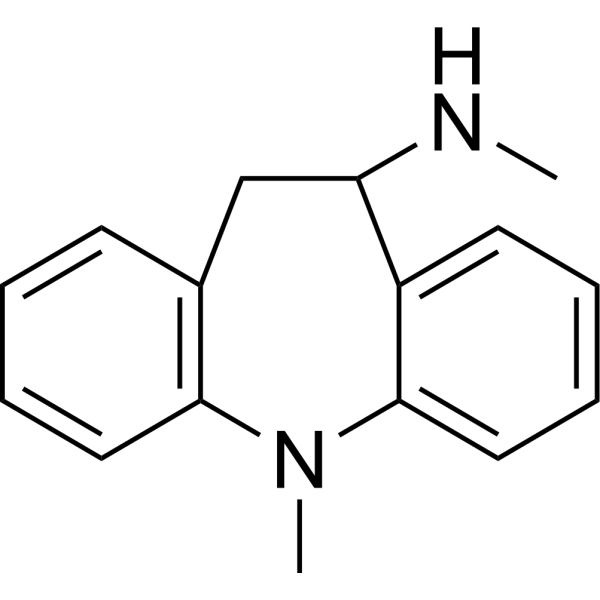
-
- HY-B0725A
-
|
|
|
|
|
Doxepin inhibits reuptake of serotonin and norepinephrine as a tricyclic antidepressant. Doxepin has therapeutic effects in atopic dermatitis,chronic urticarial,can improve cognitive processes, protect central nervous system. Doxepin has also been proposed as a protective factor against oxidative stress .
|
-
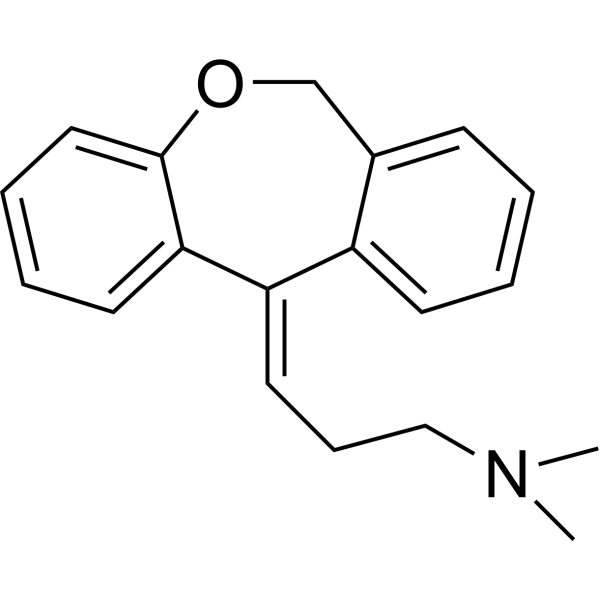
-
- HY-U00050S
-
|
E-10-OH-NT-d3
|
Isotope-Labeled Compounds
Drug Metabolite
|
Neurological Disease
|
|
(E)-10-Hydroxynortriptyline-d3 is a deuterium labeled (E)-10-Hydroxy Nortriptyline. (E)-10-Hydroxy Nortriptyline is a metabolite of Nortriptyline. Nortriptyline is a tricyclic antidepressant and the main active metabolite of Amitriptyline, and is used to relieve the symptoms of depression[1].
|
-
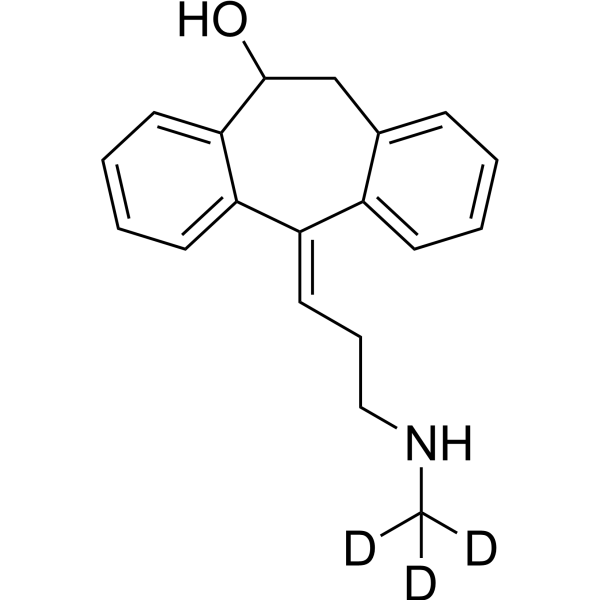
-
- HY-B0457S2
-
|
Chlorimipramine-13C,d3 hydrochloride; G-34586-13C,d3 hydrochloride; NSC-169865-13C,d3 hydrochloride
|
Isotope-Labeled Compounds
Serotonin Transporter
|
Neurological Disease
|
|
Clomipramine- 13C,d3 (hydrochloride) is the 13C- and deuterium labeled Clomipramine (hydrochloride). Clomipramine (Chlorimipramine) hydrochloride is a potent 5-HT reuptake blocker with the IC50 value of 1.5 nM. Clomipramine hydrochloride is a tricyclic antidepressant that can be used for the research of depression and obsessive compulsive disorder (OCD)[1].
|
-

-
- HY-B1272AS1
-
|
|
Dopamine Transporter
Serotonin Transporter
|
Metabolic Disease
|
|
Desipramine-d3 is the deuterium labeled Desipramine. Desipramine is a tricyclic psychotic compound, possessing antidepressant activity. Desipramine inhibits the norepinephrine reuptake receptor in the central nervous system and reduces the sleep-related loss of genioglossus activity, can be used to research the improvement of pharyngeal collapsibility[1][2][3].
|
-
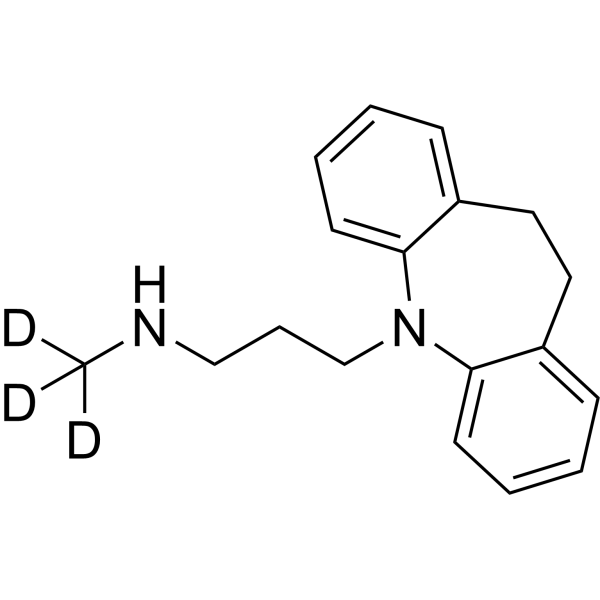
-
- HY-12388AS
-
|
Desmethylclomipramine D3 hydrochloride
|
Drug Metabolite
|
Neurological Disease
|
|
N-Desmethyl Clomipramine-d3 (hydrochloride) is the deuterium labeled N-Desmethyl Clomipramine. N-Desmethyl Clomipramine hydrochloride (Desmethylclomipramine hydrochloride) is a primary plasma N-desmethyl metabolite of Clomipramine[1]
|
-

-
- HY-100646AS
-
-

-
- HY-B1490
-
|
|
Serotonin Transporter
Apoptosis
Autophagy
|
Neurological Disease
Inflammation/Immunology
Cancer
|
|
Imipramine hydrochloride is an orally active tertiary amine tricyclic antidepressant. Imipramine hydrochloride is a Fascin1 inhibitor with antitumor activities. Imipramine hydrochloride also inhibits serotonin transporter with an IC50 value of 32 nM. Imipramine hydrochloride stimulates U-87MG glioma cells autophagy and induces HL-60 cell apoptosis. Imipramine hydrochloride shows neuroprotective and immunomodulatory effects .
|
-
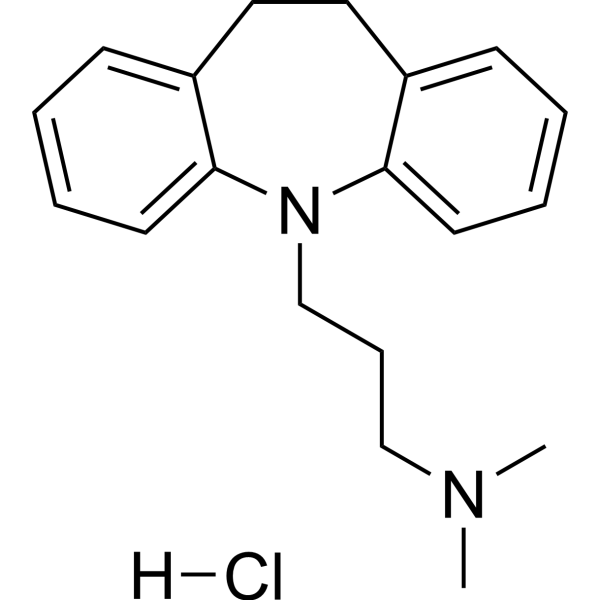
-
- HY-B1490A
-
|
|
|
|
|
Imipramine is an orally active tertiary amine tricyclic antidepressant. Imipramine is a Fascin1 inhibitor with antitumor activities. Imipramine also inhibits serotonin transporter with an IC50 value of 32 nM. Imipramine stimulates U-87MG glioma cells autophagy and induces HL-60 cell apoptosis. Imipramine shows neuroprotective and immunomodulatory effects .
|
-
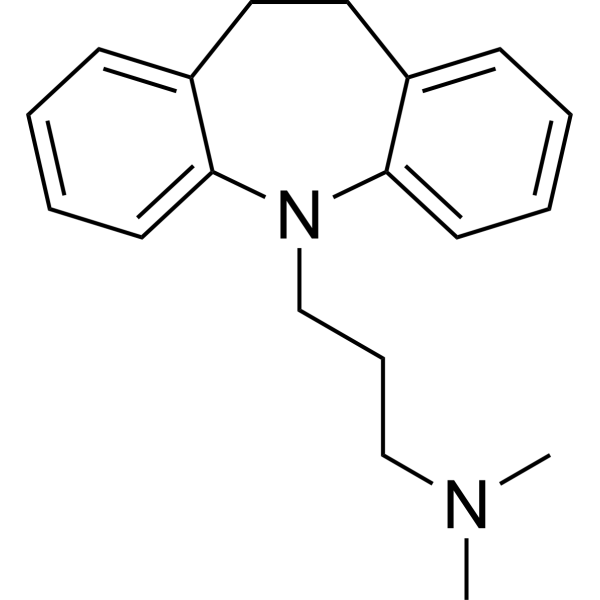
-
- HY-U00050
-
|
E-10-OH-NT
|
Drug Metabolite
|
Neurological Disease
|
|
(E)-10-Hydroxynortriptyline (E-10-OH-NT) is a metabolite of Nortriptyline (HY-B1417). Nortriptyline is a tricyclic antidepressant and the main active metabolite of Amitriptyline (HY-B0527A) . E-10-OH-NT is about 50% as potent as nortriptyline as an inhibitor of the neuronal uptake of norepinephrine in vitro and exhibits less anticholinergic effects in man.
|
-
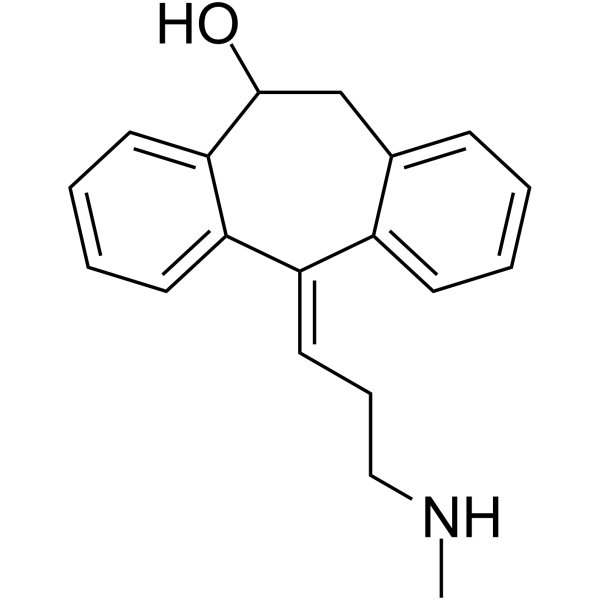
-
- HY-147333
-
|
|
Drug Metabolite
|
Neurological Disease
|
|
Trimipramine N-oxide is an active metabolite of the tricyclic antidepressant trimipramine. Trimipramine N-oxide inhibits the human monoamine transporters for noradrenaline (hNAT), serotonin (hSERT), dopamine (hDAT) and the human organic cation transporters (hOCT1 and hOCT2) with IC50s of 11.7, 3.59, 9.4, 9.35 and 27.4 nM, respectively. Trimipramine N-oxide can be used for the research of depression and anxiety .
|
-
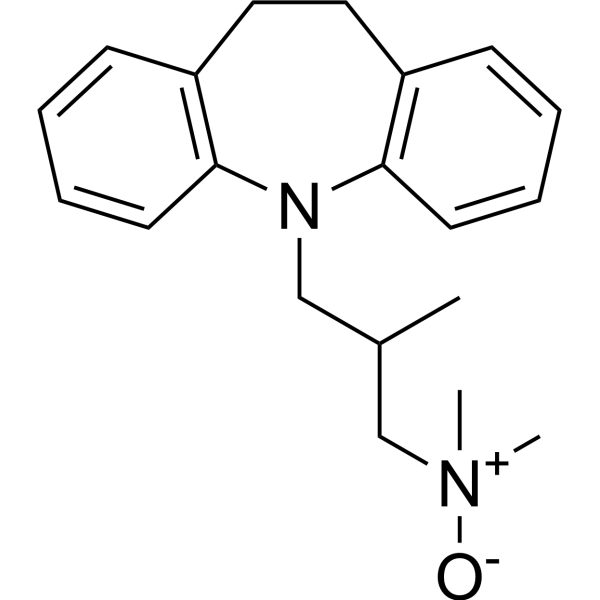
-
- HY-108256
-
|
|
5-HT Receptor
|
Neurological Disease
|
|
Melitracen hydrochloride is an orally active biphasic antidepressant and antianxiety agent. Melitracen hydrochloride can inhibit the uptake of Norepinephrine and 5-HT (serotonin) through the presynaptic membrane inducing the increase of monoamine transmitters in synaptic space .
|
-
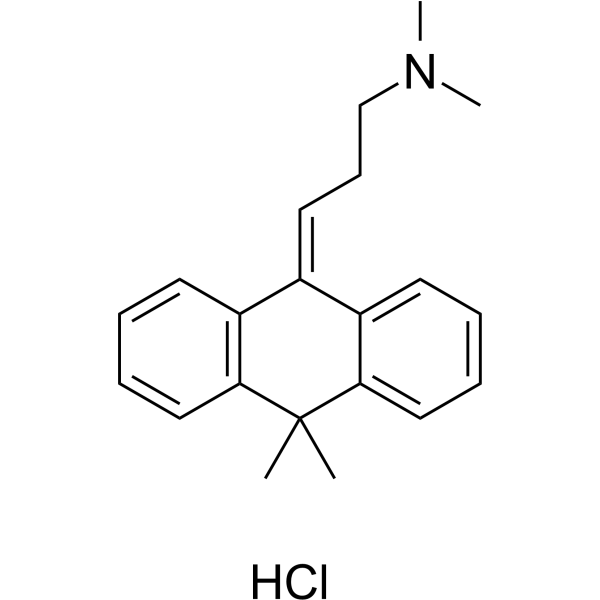
-
- HY-B1490AS
-
|
|
Isotope-Labeled Compounds
Serotonin Transporter
|
Neurological Disease
Inflammation/Immunology
Cancer
|
|
Imipramine-d6 is the deuterium labeled Imipramine hydrochloride. Imipramine is an orally active tertiary amine tricyclic antidepressant. Imipramine is a Fascin1 inhibitor with antitumor activities. Imipramine also inhibits serotonin transporter with an IC50 value of 32 nM. Imipramine stimulates U-87MG glioma cells autophagy and induces HL-60 cell apoptosis. Imipramine shows neuroprotective and immunomodulatory effects[1][2][3][4][5][6].
|
-

-
- HY-B1490S
-
|
|
Serotonin Transporter
Apoptosis
Autophagy
|
Neurological Disease
Inflammation/Immunology
Cancer
|
|
Imipramine-d4 (hydrochloride) is the deuterium labeled Imipramine hydrochloride. Imipramine hydrochloride is an orally active tertiary amine tricyclic antidepressant. Imipramine hydrochloride is a Fascin1 inhibitor with antitumor activities. Imipramine hydrochloride also inhibits serotonin transporter with an IC50 value of 32 nM. Imipramine hydrochloride stimulates U-87MG glioma cells autophagy and induces HL-60 cell apoptosis. Imipramine hydrochloride shows neuroprotective and immunomodulatory effects[1][2][3][4][5][6].
|
-
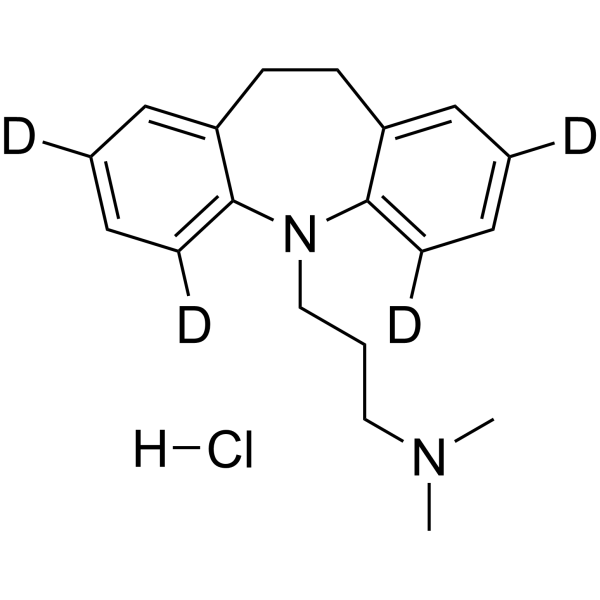
-
- HY-B1490AS1
-
|
|
Serotonin Transporter
Isotope-Labeled Compounds
Apoptosis
Autophagy
|
Others
|
|
Imipramine-d4 is deuterium labeled Imipramine. Imipramine is an orally active tertiary amine tricyclic antidepressant. Imipramine is a Fascin1 inhibitor with antitumor activities. Imipramine also inhibits serotonin transporter with an IC50 value of 32 nM. Imipramine stimulates U-87MG glioma cells autophagy and induces HL-60 cell apoptosis. Imipramine shows neuroprotective and immunomodulatory effects[1][2][3][4][5][6].
|
-
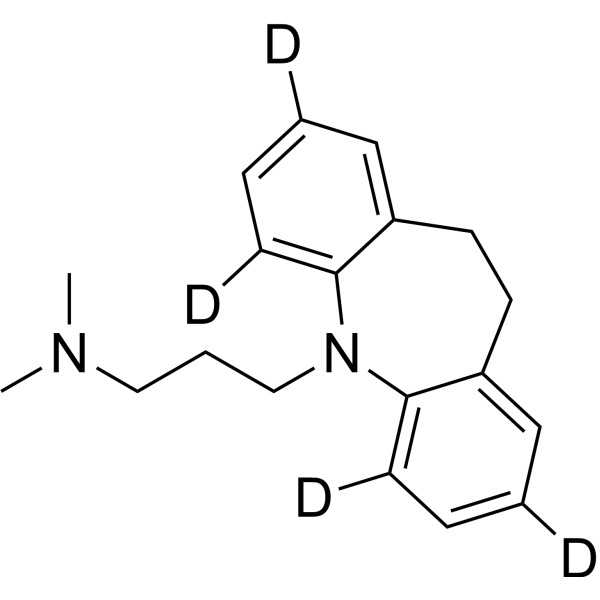
-
- HY-B1490S1
-
|
|
Isotope-Labeled Compounds
Serotonin Transporter
Autophagy
Apoptosis
|
Neurological Disease
Inflammation/Immunology
Cancer
|
|
Imipramine-d3 (hydrochloride) is deuterium labeled Imipramine (hydrochloride). Imipramine is an orally active tertiary amine tricyclic antidepressant. Imipramine is a Fascin1 inhibitor with antitumor activities. Imipramine also inhibits serotonin transporter with an IC50 value of 32 nM. Imipramine stimulates U-87MG glioma cells autophagy and induces HL-60 cell apoptosis. Imipramine shows neuroprotective and immunomodulatory effects[1][2][3][4][5][6].
|
-

-
- HY-B1490R
-
|
|
Serotonin Transporter
Apoptosis
Autophagy
|
Neurological Disease
Inflammation/Immunology
Cancer
|
|
Imipramine (hydrochloride) (Standard) is the analytical standard of Imipramine (hydrochloride). This product is intended for research and analytical applications. Imipramine hydrochloride is an orally active tertiary amine tricyclic antidepressant. Imipramine hydrochloride is a Fascin1 inhibitor with antitumor activities. Imipramine hydrochloride also inhibits serotonin transporter with an IC50 value of 32 nM. Imipramine hydrochloride stimulates U-87MG glioma cells autophagy and induces HL-60 cell apoptosis. Imipramine hydrochloride shows neuroprotective and immunomodulatory effects .
|
-
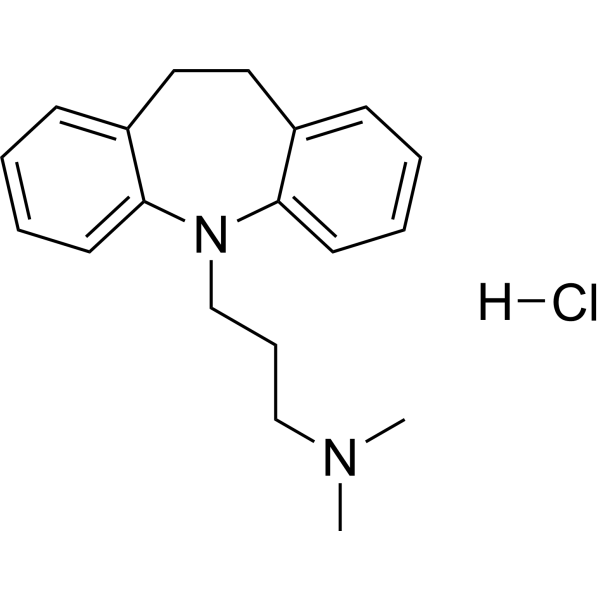
| Cat. No. |
Product Name |
Category |
Target |
Chemical Structure |
| Cat. No. |
Product Name |
Chemical Structure |
-
- HY-B0725S
-
|
|
|
Doxepin-d3 (hydrochloride) is a deuterium labeled Doxepin Hydrochloride. Doxepin hydrochloride is an orally active tricyclic antidepressant. Doxepin hydrochloride is a potent and selective histamine receptor H1 antagonist. Doxepin hydrochloride is also a potent CYP450 inhibitor and significantly inhibits CYP450 2C19 and 1A2[1][2].
|
-

-
- HY-133771AS
-
|
|
|
Nordoxepin-d3 (hydrochloride) is the deuterium labeled Nordoxepin hydrochloride. Nordoxepin hydrochloride is an active metabolite of Doxepin hydrochloride (HY-B0725), which is an orally active tricyclic antidepressant[1].
|
-

-
- HY-B1417S
-
|
|
|
Nortriptyline-d3 (hydrochloride) is the deuterium labeled Nortriptyline hydrochloride. Nortriptyline hydrochloride (Desmethylamitriptyline hydrochloride) is a tricyclic antidepressant and the main active metabolite of Amitriptyline, and used to relieve the symptoms of depression[1].
|
-

-
- HY-B0991S
-
|
|
|
Amoxapine-d8 is the deuterium labeled Amoxapine. Amoxapine is a tetracyclic antidepressant of the dibenzoxazepine family, though it is often classified as a secondary amine tricyclic antidepressant.
|
-

-
- HY-12390S
-
|
|
|
Lofepramine-d3 (Lopramine-d3) is the deuterium labeled Lofepramine. Lofepramine (Lopramine) is a potent tricyclic antidepressant and is extensively metabolised to Desipramine. The antidepressant activity of Lofepramine stems from the facilitation of noradrenergic neurotransmission by uptake inhibition. Lofepramine may also potentiate serotoninergic neurotransmission by inhibition of the neuronal uptake of serotonin and the enzyme tryptophan pyrrolase. Lofepramine has significant anxiolytic efficacy in addition to its antidepressant properties[1].
|
-

-
- HY-B0457S1
-
|
|
|
Clomipramine-d6 (hydrochloride) is the deuterium labeled Clomipramine hydrochloride. Clomipramine (Chlorimipramine) hydrochloride is a potent 5-HT reuptake blocker with the IC50 value of 1.5 nM. Clomipramine hydrochloride is a tricyclic antidepressant that can be used for the research of depression and obsessive compulsive disorder (OCD)[1].
|
-

-
- HY-B0949S
-
|
|
|
Protriptyline (N-methyl-d3) (hydrochloride) is the deuterium labeled Protriptyline hydrochloride. Protriptyline hydrochloride is a tricyclic antidepressant (TCA), specifically a secondary amine, for the treatment of depression and ADHD. Unique among the TCAs, protriptyline tends to be energizing instead of sedating, used for narcolepsy to achieve a wakefulness-promoting effect[1].
|
-

-
- HY-U00050S
-
|
|
|
(E)-10-Hydroxynortriptyline-d3 is a deuterium labeled (E)-10-Hydroxy Nortriptyline. (E)-10-Hydroxy Nortriptyline is a metabolite of Nortriptyline. Nortriptyline is a tricyclic antidepressant and the main active metabolite of Amitriptyline, and is used to relieve the symptoms of depression[1].
|
-

-
- HY-B0457S2
-
|
|
|
Clomipramine- 13C,d3 (hydrochloride) is the 13C- and deuterium labeled Clomipramine (hydrochloride). Clomipramine (Chlorimipramine) hydrochloride is a potent 5-HT reuptake blocker with the IC50 value of 1.5 nM. Clomipramine hydrochloride is a tricyclic antidepressant that can be used for the research of depression and obsessive compulsive disorder (OCD)[1].
|
-

-
- HY-B1272AS1
-
|
|
|
Desipramine-d3 is the deuterium labeled Desipramine. Desipramine is a tricyclic psychotic compound, possessing antidepressant activity. Desipramine inhibits the norepinephrine reuptake receptor in the central nervous system and reduces the sleep-related loss of genioglossus activity, can be used to research the improvement of pharyngeal collapsibility[1][2][3].
|
-

-
- HY-12388AS
-
|
|
|
N-Desmethyl Clomipramine-d3 (hydrochloride) is the deuterium labeled N-Desmethyl Clomipramine. N-Desmethyl Clomipramine hydrochloride (Desmethylclomipramine hydrochloride) is a primary plasma N-desmethyl metabolite of Clomipramine[1]
|
-

-
- HY-100646AS
-
|
|
|
(Z)-10-Hydroxynortriptyline-d3 is the deuterium labeled (Z)-10-Hydroxynortriptyline (HY-100646A). (Z)-10-Hydroxynortriptyline is a metabolite of Nortriptyline (HY-118620). Nortriptyline is a tricyclic antidepressant and the main active metabolite of Amitriptyline, and is used to relieve the symptoms of depression[1][2].
|
-

-
- HY-B1490AS
-
|
|
|
Imipramine-d6 is the deuterium labeled Imipramine hydrochloride. Imipramine is an orally active tertiary amine tricyclic antidepressant. Imipramine is a Fascin1 inhibitor with antitumor activities. Imipramine also inhibits serotonin transporter with an IC50 value of 32 nM. Imipramine stimulates U-87MG glioma cells autophagy and induces HL-60 cell apoptosis. Imipramine shows neuroprotective and immunomodulatory effects[1][2][3][4][5][6].
|
-

-
- HY-B1490S
-
|
|
|
Imipramine-d4 (hydrochloride) is the deuterium labeled Imipramine hydrochloride. Imipramine hydrochloride is an orally active tertiary amine tricyclic antidepressant. Imipramine hydrochloride is a Fascin1 inhibitor with antitumor activities. Imipramine hydrochloride also inhibits serotonin transporter with an IC50 value of 32 nM. Imipramine hydrochloride stimulates U-87MG glioma cells autophagy and induces HL-60 cell apoptosis. Imipramine hydrochloride shows neuroprotective and immunomodulatory effects[1][2][3][4][5][6].
|
-

-
- HY-B1490AS1
-
|
|
|
Imipramine-d4 is deuterium labeled Imipramine. Imipramine is an orally active tertiary amine tricyclic antidepressant. Imipramine is a Fascin1 inhibitor with antitumor activities. Imipramine also inhibits serotonin transporter with an IC50 value of 32 nM. Imipramine stimulates U-87MG glioma cells autophagy and induces HL-60 cell apoptosis. Imipramine shows neuroprotective and immunomodulatory effects[1][2][3][4][5][6].
|
-

-
- HY-B1490S1
-
|
|
|
Imipramine-d3 (hydrochloride) is deuterium labeled Imipramine (hydrochloride). Imipramine is an orally active tertiary amine tricyclic antidepressant. Imipramine is a Fascin1 inhibitor with antitumor activities. Imipramine also inhibits serotonin transporter with an IC50 value of 32 nM. Imipramine stimulates U-87MG glioma cells autophagy and induces HL-60 cell apoptosis. Imipramine shows neuroprotective and immunomodulatory effects[1][2][3][4][5][6].
|
-

Your information is safe with us. * Required Fields.
Inquiry Information
- Product Name:
- Cat. No.:
- Quantity:
- MCE Japan Authorized Agent:


























































